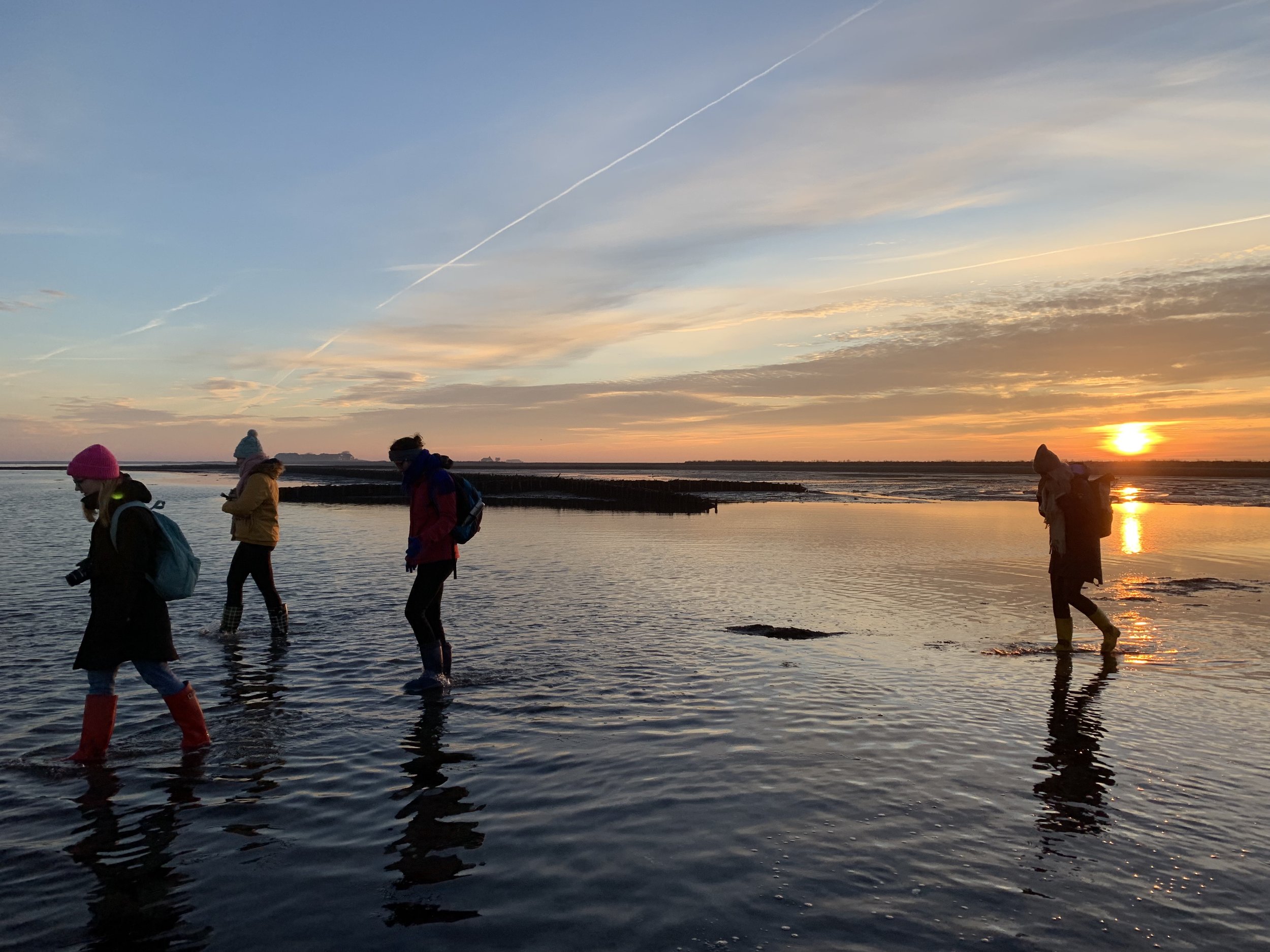
We came to Langeneß from the Department of Anthropology and Cultural Research at the University of Bremen - seven students on both MA and BA levels and a professor. Spending almost a week on these “floating dreams,” as German poet Theodor Storm once called the Halligen, we wanted to track what it means to live with water and to see what kinds of messages the waters and people held for us. We had read an ethnographic text written by trader and traveler Julius Konietzko, who had spent the years 1921-1924 on the Halligen and documented what he perceived to be a vanishing form of traditional life on and with water. Some of the objects he collected – fog horns, beautifully painted white and blue tiles, a wooden wind vane into which the image of a sea snake was carved - were to be exhibited in an 8-month exhibit dedicated entirely to water at the Museum am Rothenbaum (MARKK) in 2023. Our task, in collaboration with the MARKK, was to embed and contextualize these older objects in the watery life one finds on Langeneß today.
Our ethnographic research consisted of contacting people who live on the Hallig Langeneß. We spent time with them and interviewed them to get a sense of the place and the people living in it. Some members of the team spoke to the Langeneß mayor and other member of the Hallig´s population, others worked with the schoolteacher and her students to learn about the Langeneß childrens´vision of the future in light of climate change, and yet other members produced oral histories with elderly residents who had spent their life on Langeneß and on and with the water. We tracked the shoreline for objects that the tides had left behind. And we learned about the ecology of the Wadden Sea and its birds and salt meadows from the scientists working at the Schutzstation Wattenmeer.
Taken together, we made several written contributions to the Wasser Botschaften exhibition catalogue and produced an MA thesis (“Das Meer (r)aushalten - Zukunftsplanung auf den Halligen im Zeitalter der Ungewissheit”); a podcast on climate change and the question of futurity; a film (“Oceanic Feeling/Das Ozeanische Gefühl”); two interviews (“Fog Stories”) and sound (“Boy Peter Andresen bläst ein Nebelhorn”); an installation on trash found along the shores of Langeneß; as well as a short film on “Living with Salt.” These visual, oral, and textual materials, including some of the objects collected by Konietzko in the 1920s, were exhibited at the “Water Messages” exhibit at the MARKK in Hamburg from February 25-October 31, 2023. Our contributions can be found under “Our Work.”
